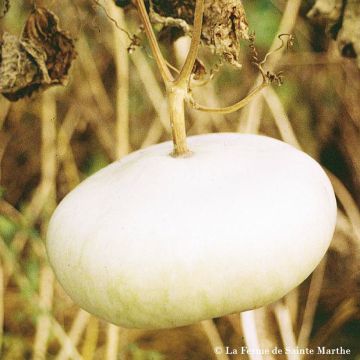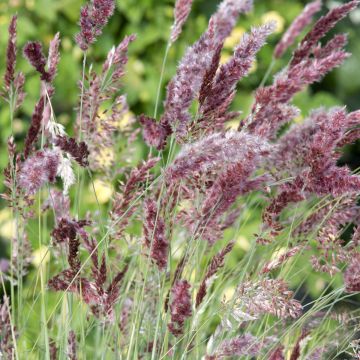Shipping country and language
Your country of residence may be:
Your country of residence is:
For a better user experience on our website, you can select:
Your shipping country:
Andorra
Austria
Belgium
Bulgaria
Canada
Chile
Croatia
Cyprus
Czechia
Denmark
Estonia
Finland
France
Germany
Greece
Hungary
Iceland
Ireland
Italy
Latvia
Lithuania
Luxembourg
Malta
Monaco
Netherlands
Poland
Portugal
Romania
Slovakia
Slovenia
Spain
Sweden
Switzerland
United Kingdom
We only deliver seed and bulb products to your country. If you add other products to your basket, they cannot be shipped.
Language:
French
German
Spanish
English
My Account
Hello
My wish lists
Plantfit
Log in / Register
Existing customer?
New customer?
Create an account to track your orders, access our customer service and, if you wish, make the most of our upcoming offers.


Linaria purpurea Canon Went - seeds
Linaria purpurea Canon Went - seeds
Linaria purpurea Canon J. Went (Canon Went)
Why not try an alternative variety in stock?
View all →Order in the next for dispatch today!
Dispatch by letter from 3,90 €.
Delivery charge from 5,90 € Oversize package delivery charge from 6,90 €.
More information
This item is not available in your country.
Shipping country:
Andorra
Austria
Belgium
Bulgaria
Canada
Chile
Croatia
Cyprus
Czechia
Denmark
Estonia
Finland
France
Germany
Greece
Hungary
Iceland
Ireland
Italy
Latvia
Lithuania
Luxembourg
Malta
Monaco
Netherlands
Poland
Portugal
Romania
Slovakia
Slovenia
Spain
Sweden
Switzerland
United Kingdom
Schedule delivery date,
and select date in basket
This plant carries a 6 months recovery warranty
More information
We guarantee the quality of our plants for a full growing cycle, and will replace at our expense any plant that fails to recover under normal climatic and planting conditions.
Seed-only orders are dispatched by sealed envelope. The delivery charge for seed-only orders is 3,90 €.
Would this plant suit my garden?
Set up your Plantfit profile →
Description
Linaria purpurea Canon J. Went or 'Canon Went' is a variety of purple toadflax selected for its pastel pink flowering. It is a tall perennial for dry, even rocky, terrain, ideal for creating a low-maintenance garden. It produces flexible spikes adorned with flowers resembling tiny pale pink snapdragons for several weeks in summer. Its charming and airy flowering brings a natural touch to rockeries, slopes, and sunny borders. This plant self-seeds spontaneously in light soils, between stones in walls, and among rocks. Be aware that spontaneous seedlings often revert to the original type.
Linaria purpurea 'Canon Went' belongs to the Plantaginaceae or Scrophulariaceae family, depending on the classification. It is a cousin of snapdragons but larger and more elegant. The species Linaria purpurea has become naturalised in many regions, with its origins believed to be in southern Europe, possibly Italy. 'Canon Went' is a short-lived perennial (around 4 years) with rapid growth. It is a deciduous plant with an upright clump habit, reaching a minimum height of 80 cm and a diameter of 30 cm. Flowering occurs from June to September. In hot and dry climates, it fades in August and resumes in September-October. The flowers, measuring 2 cm in length, consist of two pale pink lips ending in a curved spur, revealing a white-bearded throat. They are grouped in dense spikes. After pollination, round fruits form and release numerous small black seeds when ripe. The more or less deciduous foliage adorns the slender stems. The leaves are thin, linear, lanceolate, greyish-green to bluish-green, 2 to 6 cm in length. This plant does not live very long but readily self-seeds, although not always faithfully.
Linaria purpurea 'Canon Went' adds a touch of elegance and cheer wherever it thrives. It is so undemanding that it flourishes in the poorest soils. It can be used abundantly in flowered walls, rockeries, and large dry slopes. In wild areas of the garden or in dry meadows, it can accompany Euphobia characias, tall mulleins (Verbascums), and gauras. It can also be planted among bush roses and small shrubs for dry terrain (lavenders, Teucrium fruticans 'Azureum', cistus, etc.).
Etymology: the species name 'Linaria' comes from Linum, which means flax: its fine leaves somewhat resemble those of flax.
Flowering
Foliage
Plant habit
Botanical data
Linaria
purpurea
Canon J. Went (Canon Went)
Plantaginaceae (Scrophulariaceae)
Cultivar or hybrid
Other Flower seeds A to Z
Planting and care
Sow linaria seeds from February to April on the surface of well-drained seed compost. Do not cover the seeds. Place in a propagator or a tray enclosed in a plastic bag kept at 20-25 °C until germination, which usually takes 10 to 21 days. Light facilitates germination. Transplant the seedlings when they are large enough to handle, into 8 cm pots or trays. Gradually acclimatise the plants to cooler conditions for a few weeks before planting them outdoors, after all risk of frost, with a spacing of 50-60 cm between each plant.
You can also sow directly in the ground in spring, as soon as the risk of frost has passed, or in early autumn in mild climates. The soil should be cleared of all weeds beforehand, well worked, and possibly lightened with coarse sand and leaf compost. As the seeds are very fine, it can be useful to mix them carefully with dry sand before sowing, as this makes it easier to scatter the seeds on the desired surface. Thin out the seedlings if necessary. Keep one plant every 50 cm.
Linaria plants thrive in well-drained, sandy or rocky, light soils, and full sun. They dislike stagnant moisture and cold and wet winters. Depending on your climate, these plants will bloom all summer in moist soil, or in spring and autumn if the soil is dry in summer. Once well established, these plants do not require any watering in summer, even in Mediterranean climates.
Sowing period
Intended location
This item has not been reviewed yet - be the first to leave a review about it.
Flower seeds
Haven't found what you were looking for?
Hardiness is the lowest winter temperature a plant can endure without suffering serious damage or even dying. However, hardiness is affected by location (a sheltered area, such as a patio), protection (winter cover) and soil type (hardiness is improved by well-drained soil).

Photo Sharing Terms & Conditions
In order to encourage gardeners to interact and share their experiences, Promesse de fleurs offers various media enabling content to be uploaded onto its Site - in particular via the ‘Photo sharing’ module.
The User agrees to refrain from:
- Posting any content that is illegal, prejudicial, insulting, racist, inciteful to hatred, revisionist, contrary to public decency, that infringes on privacy or on the privacy rights of third parties, in particular the publicity rights of persons and goods, intellectual property rights, or the right to privacy.
- Submitting content on behalf of a third party;
- Impersonate the identity of a third party and/or publish any personal information about a third party;
In general, the User undertakes to refrain from any unethical behaviour.
All Content (in particular text, comments, files, images, photos, videos, creative works, etc.), which may be subject to property or intellectual property rights, image or other private rights, shall remain the property of the User, subject to the limited rights granted by the terms of the licence granted by Promesse de fleurs as stated below. Users are at liberty to publish or not to publish such Content on the Site, notably via the ‘Photo Sharing’ facility, and accept that this Content shall be made public and freely accessible, notably on the Internet.
Users further acknowledge, undertake to have ,and guarantee that they hold all necessary rights and permissions to publish such material on the Site, in particular with regard to the legislation in force pertaining to any privacy, property, intellectual property, image, or contractual rights, or rights of any other nature. By publishing such Content on the Site, Users acknowledge accepting full liability as publishers of the Content within the meaning of the law, and grant Promesse de fleurs, free of charge, an inclusive, worldwide licence for the said Content for the entire duration of its publication, including all reproduction, representation, up/downloading, displaying, performing, transmission, and storage rights.
Users also grant permission for their name to be linked to the Content and accept that this link may not always be made available.
By engaging in posting material, Users consent to their Content becoming automatically accessible on the Internet, in particular on other sites and/or blogs and/or web pages of the Promesse de fleurs site, including in particular social pages and the Promesse de fleurs catalogue.
Users may secure the removal of entrusted content free of charge by issuing a simple request via our contact form.
The flowering period indicated on our website applies to countries and regions located in USDA zone 8 (France, the United Kingdom, Ireland, the Netherlands, etc.)
It will vary according to where you live:
- In zones 9 to 10 (Italy, Spain, Greece, etc.), flowering will occur about 2 to 4 weeks earlier.
- In zones 6 to 7 (Germany, Poland, Slovenia, and lower mountainous regions), flowering will be delayed by 2 to 3 weeks.
- In zone 5 (Central Europe, Scandinavia), blooming will be delayed by 3 to 5 weeks.
In temperate climates, pruning of spring-flowering shrubs (forsythia, spireas, etc.) should be done just after flowering.
Pruning of summer-flowering shrubs (Indian Lilac, Perovskia, etc.) can be done in winter or spring.
In cold regions as well as with frost-sensitive plants, avoid pruning too early when severe frosts may still occur.
The planting period indicated on our website applies to countries and regions located in USDA zone 8 (France, United Kingdom, Ireland, Netherlands).
It will vary according to where you live:
- In Mediterranean zones (Marseille, Madrid, Milan, etc.), autumn and winter are the best planting periods.
- In continental zones (Strasbourg, Munich, Vienna, etc.), delay planting by 2 to 3 weeks in spring and bring it forward by 2 to 4 weeks in autumn.
- In mountainous regions (the Alps, Pyrenees, Carpathians, etc.), it is best to plant in late spring (May-June) or late summer (August-September).
The harvesting period indicated on our website applies to countries and regions in USDA zone 8 (France, England, Ireland, the Netherlands).
In colder areas (Scandinavia, Poland, Austria...) fruit and vegetable harvests are likely to be delayed by 3-4 weeks.
In warmer areas (Italy, Spain, Greece, etc.), harvesting will probably take place earlier, depending on weather conditions.
The sowing periods indicated on our website apply to countries and regions within USDA Zone 8 (France, UK, Ireland, Netherlands).
In colder areas (Scandinavia, Poland, Austria...), delay any outdoor sowing by 3-4 weeks, or sow under glass.
In warmer climes (Italy, Spain, Greece, etc.), bring outdoor sowing forward by a few weeks.




































